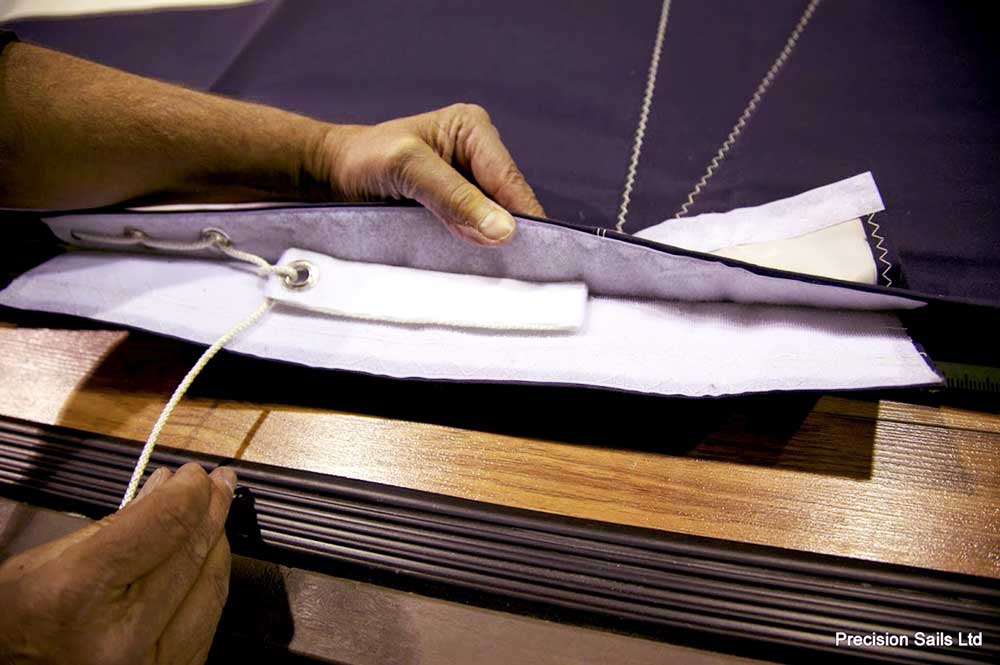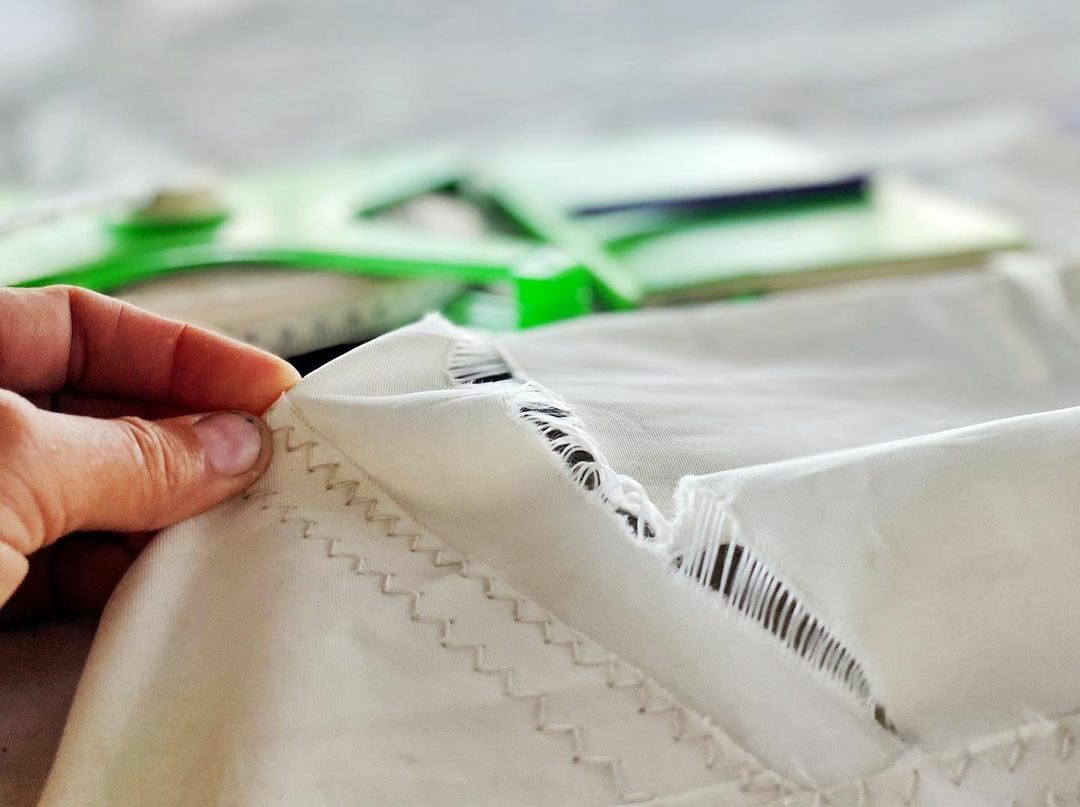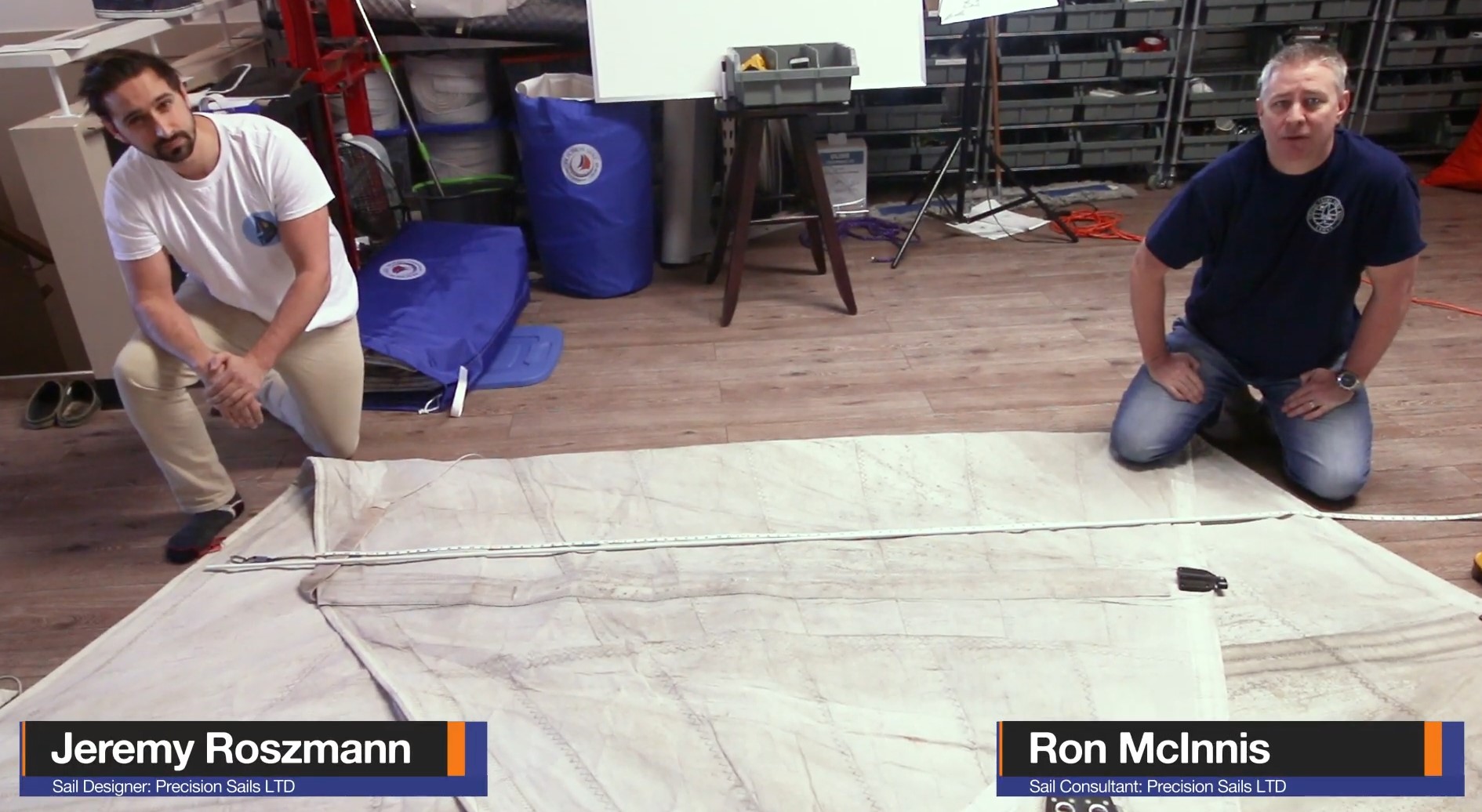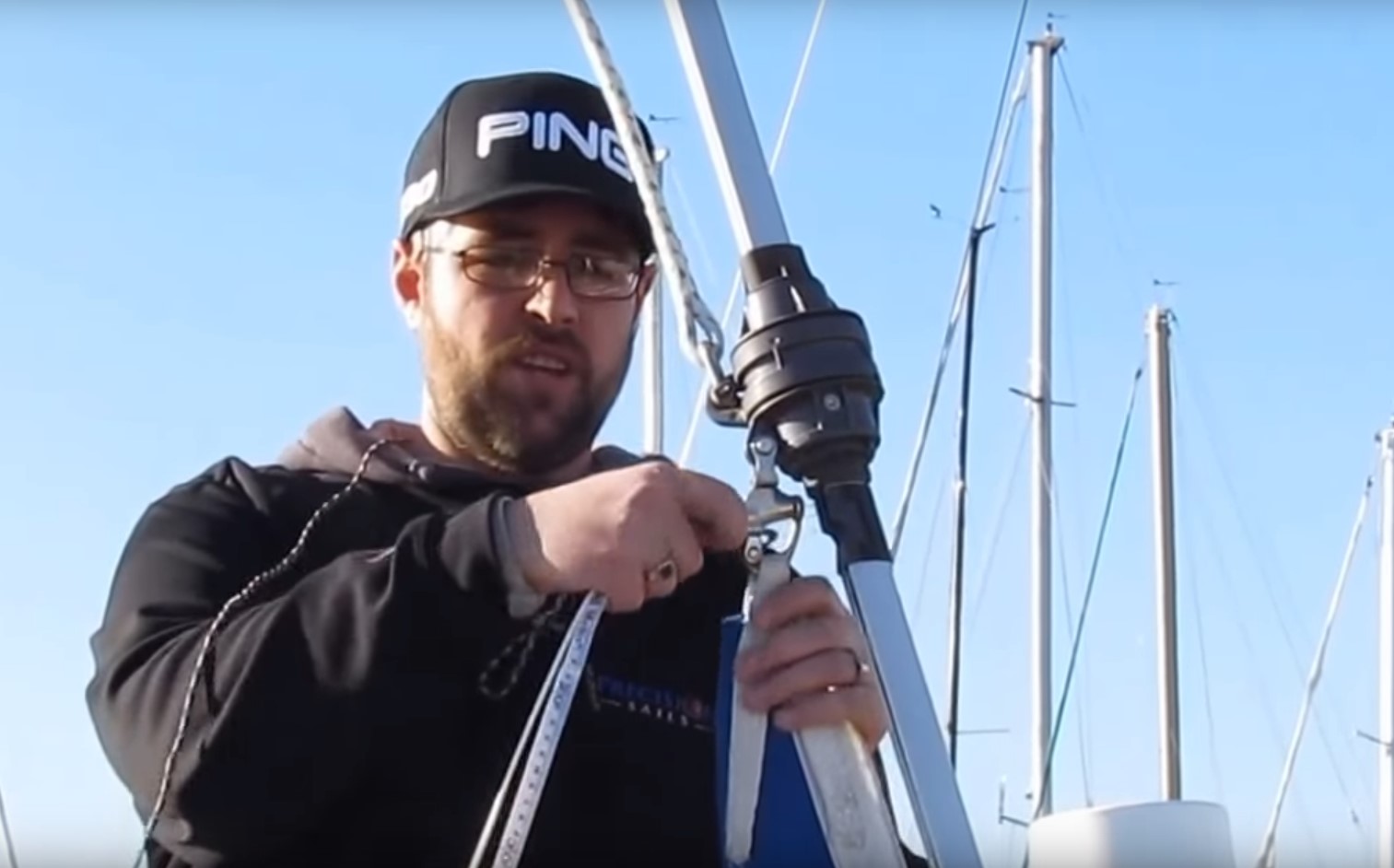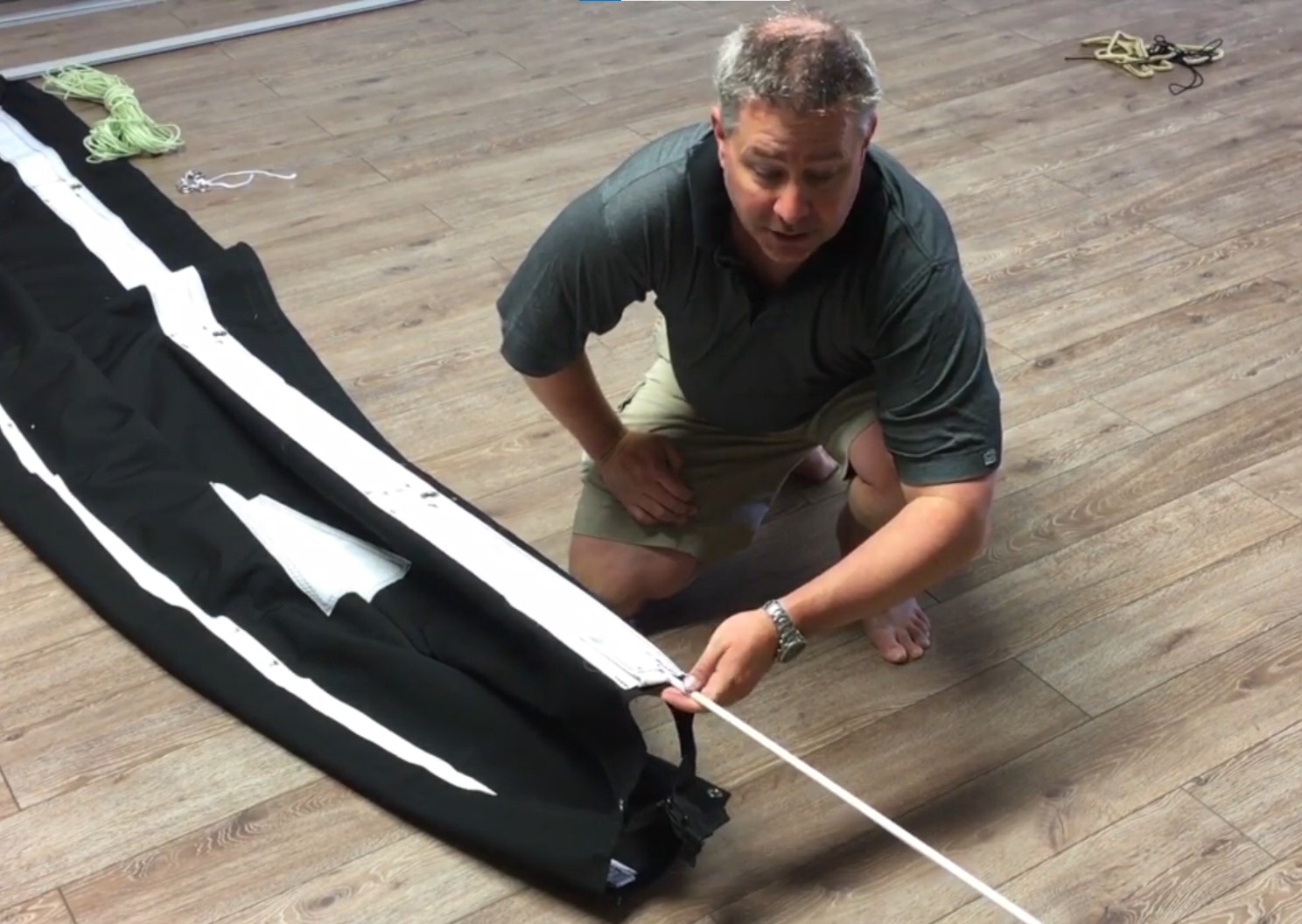With the sailing season almost upon those of us living in the northern hemisphere, now is the time to inspect our sails so we can be confident they will survive another season of abuse. Unfortunately, this is not one of the more glamorous or exciting parts of sailing, and for some, it can fall by the wayside until it is too late. However, if you do not mind filling your living room with Dacron for an afternoon, we will show you how to inspect your sails from the comfort of your own couch!
Read More about Checking Sails At Home
Is one better than the other? In this post, one of Precision Sails’ Senior Sail Designers, Jeremy Roszmann, discusses the details and features of the two sail types. Learn more about the history and background of fixed foot and loose foot sails. Jeremey also discusses how the differences in the designed shape of the sail and its functionality affect the efficiency and power of the sails. He dives into the topic of rigging and removal and how it can change removing the sail from your boat. Join us as we explore the different advantages and disadvantages of these two sail styles.
Read More about Loose vs Fixed Foot
Ever wonder why there are so many slider options? Jeremy dives into the discussion of when to choose flat sliders, half round sliders or external sliders. Learn everything you want to know about attachment hardware and sliders from one of Precision Sails’ top designers.
Read More about Mainsail Attachments: Sliders And Systems
We will be discussing the best methods to handle your boat safely in foul weather conditions while sailing offshore. Learning how to safely handle your vessel in these conditions can give you the confidence to overcome this fear, ultimately seeing the storm not as an ordeal but simply an opportunity to sail in different conditions. The blog ascertains the points of passage planning, prior preparations and heavy weather sail configurations and more.
Read More about Offshore Sailing: Heavy Weather
There is an old saying that B.O.A.T. is an acronym for “bring on another thousand”. Unfortunately there is some truth in this as sailboats require continuous maintenance and upgrades. This includes the eventual challenge of deciding between having to be content with your old, worn out sails or replacing them with new sails. Whether your sails are old and ragged or new and bright, here are a few things you can do in order to prolong the lifespan of your sails and maximize their performance.
Read More about Maintaining Your Sails and Increasing Their Lifespan
Reefing is meant to increase your ease-of-use, flatten sail shape, reduce sail area, and re-position the boat’s center of effort. This reduces heeling and de-powers your sails to improve safety and stability in rough weather. Reefing is an important part of sailing to learn and understand how to do efficiently and effectively.
Read More about Reefing 101: How to reef a mainsail and when to do it
A leech line is attached at the head of your sail and runs down to just above the clew. This line can be usually be adjusted using cleats, or Velcro tabs at the clew or intermediately at reefs. Tensioning this line reduces flutter in the trailing edge of the sail and improves sail shape.
Read More about Leech and Foot Lines
Checking the condition of your sails is a major component of regular maintenance. It can prevent small issues from becoming larger disasters in the future. And when purchasing a boat can inform you about the upkeep and age of the sails from the prior owner. Unfortunately, it is probably one of the more mundane tasks.
Read More about Sail Maintenance: Checking the Condition of Sails
In this guide Ron McInnis, and Jeremy Roszmann are going to go over the measurements needed for your. Catamaran Mainsail Battens and Batten Hardware. All these measurements can be done single-handed, however, a second set of hands will aid in speed and precision.
Read More about How to Measure Your Catamaran Battens and Batten Hardware
Purchasing a new Head Sail for your sailboat is one of those investments that every sailor will be faced with eventually. Sails don’t last forever, even if you treat them like gold. Once you have decided to invest in new sails you may.
Read More about How to Measure for a New Headsail (Jib or Genoa)
How To Install a Lazy Jack Bag System: The Lazy Cradle is possibly the easiest way to cover your mainsail and is perfect for short-handed crews. One simply lowers the halyard, settling the sail in the cover, and zips the top for complete coverage.
Read More about How to Install a Precision Sails Lazy Jack Bag System

